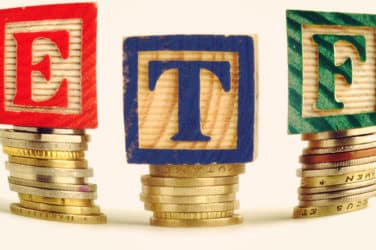The summer got off to a slow start in exchange-traded funds.
For a third month in 2018, US-listed ETFs posted net monthly outflows in June, according to the latest tally from State Street Global Advisors. The firm noted that this is the highest number of months with outflows in a single year for ETFs since 2008.
Yikes.

Matthew Bartolini, SSGA
Matthew Bartolini, Head of SPDR Americas Research at SSGA, spoke with Traders Magazine about the data from the firm’s latest ETF Flash Flow report and how the month played out. Before throwing the baby out with the bathwater, Bartolini noted that while equity and commodity ETFs posted net outflows of $5.8 billion and $2.1 billion respectively in June, fixed income ETFs attracted a whopping $7.4 billion of inflows during the month.
“This marks the 35th consecutive month of inflows for bond ETFs,” he said. “Fixed income flows were positive, led by government and short duration corporates, however, high yield posted outflows for the 4th month this year.”
In looking at the entire month, Bartolini noted flows were muted as trade tensions rattled investor sentiment, pushing global equities negative for the year and prompting investors to rotate out of stocks. With the yield curve flattening to nearly 30 basis points, financial stocks witnessed the most sector outflows, followed by trade-impacted industrials. Yet, while growth is lower, it is still positive, he added, and, given equities’ dour performance so far, valuations are near long-term averages.
“So, investors shouldn’t turtle or call it a day,” Bartolini said. “Rather, it’s time to be more selective within equities in order to not get stuffed. Consider focusing on more fundamentally driven segments with persistent growth, such as technology. You might also rotate into areas that could benefit from the uptick in producer prices, such as materials or energy.”
As for fixed income, he said investors ought to consider bolstering their portfolios by targeting short-duration exposures, such as floating rate notes which may be able to balance equity risk and limit duration, while receiving a yield 40% above what stocks offer.
Internationally speaking, for the second consecutive month, equities saw outflows, totaling $3.3 and $9.9 billion in May and June, respectively. As in May, June flows were again concentrated in emerging markets, accounting for 69% of this month’s negative international total.
“The last time non-US-focused ETFs had back-to-back month outflows was at the start of 2016. Back then, global equity markets were mired in an energy crisis that derailed earnings growth and concerns over a Chinese economic growth hard landing,” Bartolini noted. “Now, deteriorating trade rhetoric and the US dollar’s corresponding appreciation since mid-April by over 6% are the culprits weighing on performance.”





